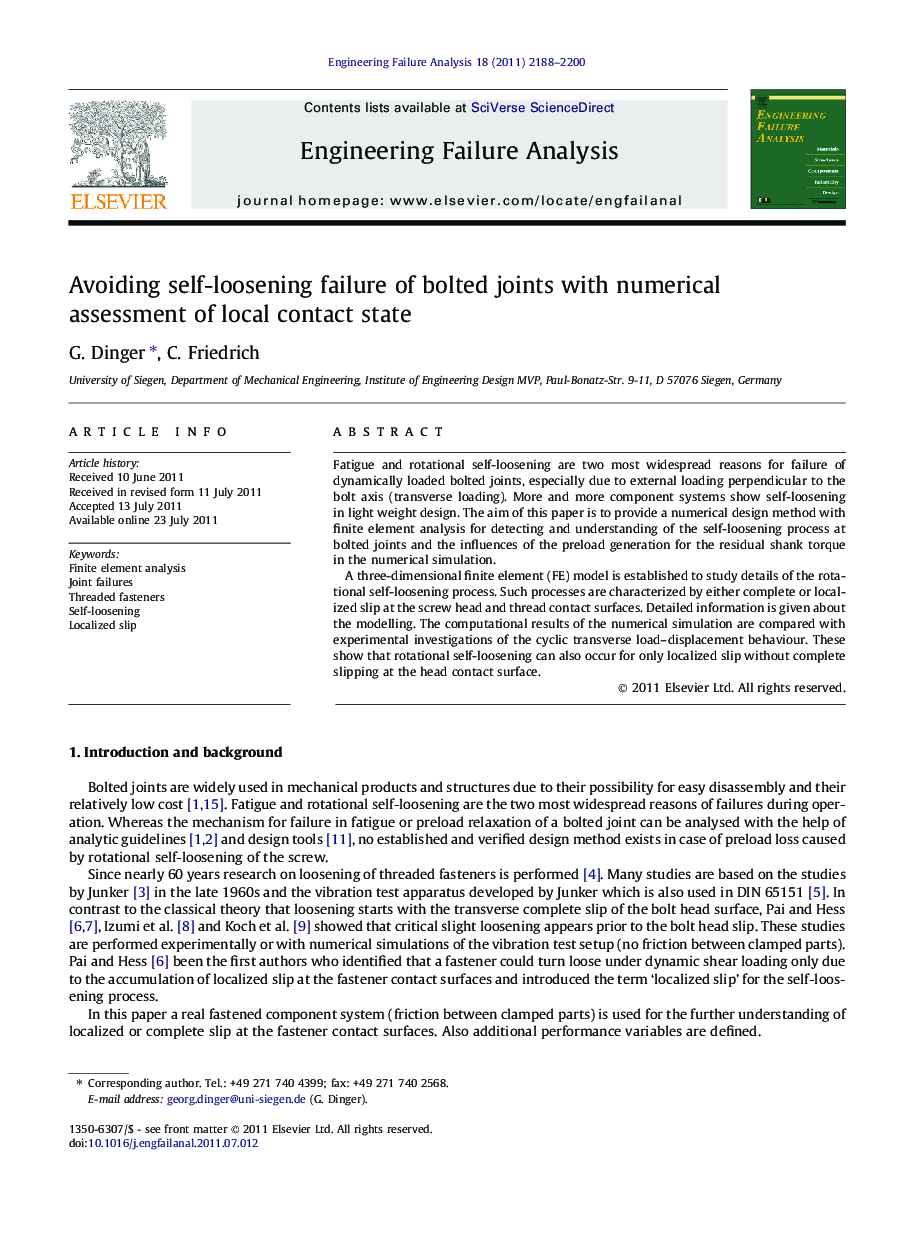| کد مقاله | کد نشریه | سال انتشار | مقاله انگلیسی | نسخه تمام متن |
|---|---|---|---|---|
| 768982 | 897366 | 2011 | 13 صفحه PDF | دانلود رایگان |

Fatigue and rotational self-loosening are two most widespread reasons for failure of dynamically loaded bolted joints, especially due to external loading perpendicular to the bolt axis (transverse loading). More and more component systems show self-loosening in light weight design. The aim of this paper is to provide a numerical design method with finite element analysis for detecting and understanding of the self-loosening process at bolted joints and the influences of the preload generation for the residual shank torque in the numerical simulation.A three-dimensional finite element (FE) model is established to study details of the rotational self-loosening process. Such processes are characterized by either complete or localized slip at the screw head and thread contact surfaces. Detailed information is given about the modelling. The computational results of the numerical simulation are compared with experimental investigations of the cyclic transverse load–displacement behaviour. These show that rotational self-loosening can also occur for only localized slip without complete slipping at the head contact surface.
► The preload generation influences the residual shank torque in the numerical simulation.
► Preload generation without thread friction (V2) saves analysis cost.
► Evaluation of local contact state can prevent self-loosening of bolted joints.
► The simulation of the transverse behaviour shows close agreement to the experimental observed behaviour.
Journal: Engineering Failure Analysis - Volume 18, Issue 8, December 2011, Pages 2188–2200